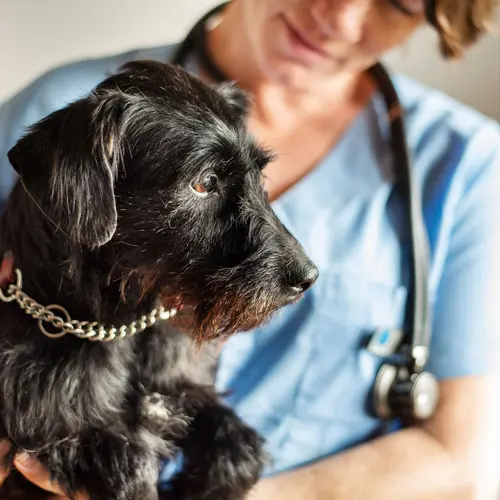Elective surgery for dogs: It may sound odd, but it’s exactly what some purebreds undergo shortly after birth. Two surgical procedures -- ear cropping and tail docking -- have long been routine in certain breeds like Dobermans, German shorthaired pointers, and schnauzers. But an increasing number of experts and animal organizations argue that just because something is the norm doesn’t mean it’s OK.
What It Involves
Docking -- removing part or all of a dog’s tail, usually with surgical scissors -- is done when a dog is just a few days old and their tail’s still “soft.” This surgery is also known as “bobbing.”
“Docking’s usually performed by a veterinarian or breeder without anesthesia, the rationale being that although it certainly causes pain, the puppy isn’t fully alert yet and won’t remember it,” says Emily Patterson-Kane, PhD, an animal welfare scientist at the American Veterinary Medical Association (AVMA). Patterson-Kane doesn’t support the procedure herself.
Cropping -- cutting off the floppy part of a dog’s ear -- is usually performed on anesthetized dogs between 6 and 12 weeks old. The ears are then taped to a hard surface for several weeks while they heal so they stay upright.
Why Some Think It’s a Bad Idea
Tail docking is banned in many parts of the world, including Australia and the U.K. In the U.S., these procedures are unregulated -- meaning they are not banned or controlled. But they are highly controversial. New York and Vermont have considered legislation to ban them, but neither state has so far.
The American Kennel Club (AKC) says the practices are “integral to defining and preserving breed character” in certain breeds. But the American Veterinary Medical Association (AVMA) opposes docking and cropping. “The most common reason for cropping and docking is to give a dog a certain look. That means it poses unnecessary risks,” Patterson-Kane says.
Docked tails can also develop a neuroma, or nerve tumor. This can cause pain and make your dog snappy if their tail is touched. Studies show that dogs communicate emotions like anger and excitement by wagging their tails, so docking “may interfere with your dog’s ability to interact with other dogs,” says Andy Roark, a veterinarian at Cleveland Park Animal Hospital in Greenville, S.C.
Unclear Benefits
Though docking and cropping are done mostly for appearance’s sake, many owners and breeders say removing hunting and farm dogs’ tails might prevent injuries during chases or herding. Others say docking keeps energetic breeds like boxers from hurting their tails by thumping them against walls or dog crates. Some owners believe ear cropping lowers the odds of infections.
James Serpell, PhD, director of the Center for the Interaction of Animals and Society at the University of Pennsylvania, argues that docking itself could be considered an injury. On the other hand, he says, “research shows that an intact tail is unlikely to become injured, and if it does, injuries are usually minor and heal easily.” Research shows that at least 80 percent of dogs won’t get ear infections, “and the breeds that are most likely to get them, such as cocker spaniels and poodles, don’t get their ears docked,” Patterson-Kane says.
Falling Out of Fashion
Vets say both procedures -- especially ear cropping -- are becoming less common. “I’ve worked with nearly 40 animal doctors during my career, and I know maybe two who perform crops,” Roark says. Banfield Pet Hospital, the largest network of animal hospitals in the U.S., no longer performs docking or cropping. And the AKC says dogs without docks or crops are just as likely to win at dog shows.
Fifteen of the 225 dogs showing in the 2014 Westminster Kennel Club dog show agility contest are mixed-breed (also called “all-American”). “We're seeing a lot more natural-eared dogs in the ring, and the occasional undocked," says Westminster spokesman David Frei.
“We’re seeing a rapid change in American dog culture. It’s no longer unusual to see schnauzers without cropped ears and boxers with long tails,” Roark says.
Remember: Alteration Is an Option
If you’re thinking about getting a puppy whose breed often gets docked or cropped, ask yourself: Are the risks and pain my dog may experience worth it? “When I bring surgery up with [potential pet owners], many don’t even realize it’s a choice,” Roark says. If you’re getting your dog from a breeder, make sure they know before the dog is born if you don’t want your puppy docked, Serpell says.
Or avoid the question altogether by getting an older dog.

